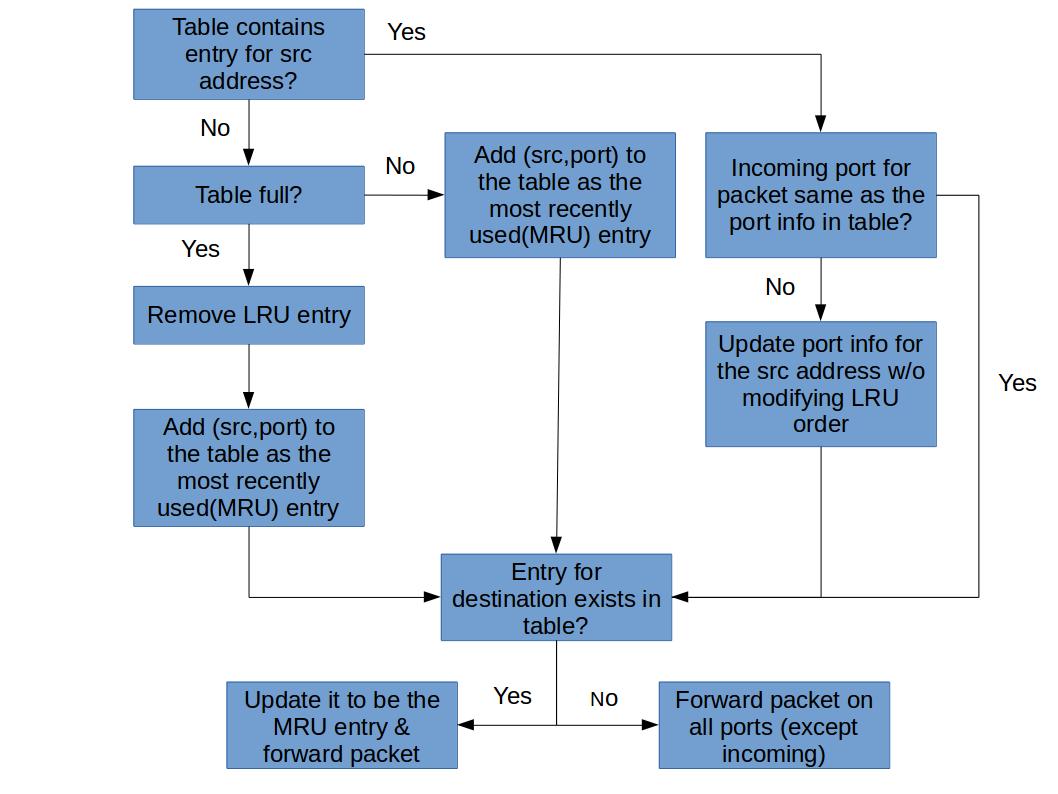Task 4: Least Recently Used
Implementing Limited Storage for Rules Learned
Real learning switches also have limited storage for forwarding rules that are learned. Implement a feature by which your learning switch can only hold a limited number of rules (implement this flexibly so that you can easily change the maximum number of rules). When your switch needs to add a new rule but there is no more space, you can consider different policies for evicting an existing rule. This time we evict the least recently used rule.
General implementations of this technique require keeping "age bits" for rules and track the "Least Recently Used" rule based on age-bits. In such an implementation, every time a rule is used, the age of all other rules changes.
For this functionality assume that your table can only hold 5 entries at a time. If a new entry comes and your table is full, you will remove the entry that has not been matched with a Ethernet frame destination address for the longest time.
The following flowchart summarizes the algorithm described above.

Your switch may have a table like:
| MAC Address | Interface | Age |
|---|---|---|
| ab:cd:ef:fe:cd:ba | interface-0 | 2 |
| ... | ... | ... |
Coding
Your task is to implement the logic in the above flowchart, using the Switchyard framework. You can start with copying the content of lab_2/myswitch.py to lab_2/myswitch_lru.py, which is the only file you'll need to modify.
Testing
Test your switch with the test file switchtests_lru.srpy we provide.
✅ In the report, show the test result of your switch.
(Optional) If you have written the test files yourself, show how you test the LRU algorithm.
Deploying
Run your switch in Mininet.
✅ In Mininet, test the LRU algorithm. Prove that the LRU algorithm works with your testing procedure in the report.